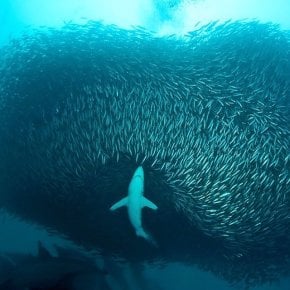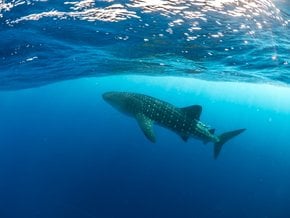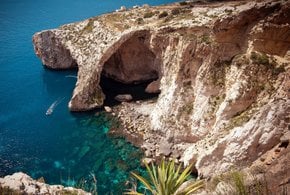Jellyfish in Malta 2026
Unfortunately Malta is plagued by more and more jellyfish every summer due to increasing temperatures
Best time: April–September
Jellyfish, gelatinous marine animals, are typically non-aggressive and free-swimming in the Mediterranean. However, their reproduction has surged in recent years due to overfishing and climate change. These fascinating yet sometimes intimidating creatures are a significant part of Malta's coastal ecosystem. With their presence in Maltese waters increasing, it's essential to understand the types of jellyfish you might encounter, how to stay safe, and where to find jellyfish-free swimming spots.
Types of Jellyfish in Maltese Waters
Mauve Stinger
The most common jellyfish in Malta is the Mauve Stinger, which is usually found near the surface of the water during times of diminished light or after washing up on the beach. Recognizable by its pinkish mushroom-shaped head and long tentacles, this jellyfish is known for its painful sting. It thrives in warmer waters, making its presence more pronounced during the spring and summer months. While its sting is not deadly, it can cause significant discomfort and, in some cases, allergic reactions.
Moon Jellyfish
Easily identifiable by its translucent, moon-like appearance, the Moon Jellyfish has a mild sting compared to other species. Its venom is less potent, making it less of a threat to swimmers.
Fried Egg Jellyfish
Known locally as il-Qassats, the Fried Egg Jellyfish is distinctive with its yellow, egg-yolk-like appearance. This species does not sting, making it harmless to humans. It is commonly seen from the end of summer through autumn.
Understanding Jellyfish Behavior
Jellyfish cannot swim against currents; instead, they drift with the tides and winds. This behavior explains why they often appear in large groups or swarms. Overfishing and climate change have contributed to their increased presence in the Mediterranean, including Maltese waters. Notably, jellyfish populations surge when the sea temperature rises in April and cools down in September.
Snorkeling and Diving
The best way to see jellyfish underwater is by snorkeling or diving in clear, calm waters where these fascinating creatures are often found. Snorkeling offers a closer and more immersive experience, allowing you to observe jellyfish in their natural habitat with minimal disturbance. Dive sites around Malta, such as the Blue Lagoon in Comino, are popular for their abundant marine life and crystal-clear waters, providing an ideal environment to view various jellyfish species up close. Always keep a safe distance to avoid stings, and consider joining a guided tour for expert insights and safe practices.
Staying Safe
Understanding jellyfish behavior, recognizing safe swimming areas, and knowing how to treat stings are crucial for enjoying Malta's beach season. Beaches in Malta use a purple flag to indicate the presence of jellyfish. Paying attention to these warnings can help you avoid stings. Additionally, checking wind directions and local beach reports can provide valuable information about jellyfish activity.
If stung by a jellyfish, immediately exit the water to prevent further contact. Rinse the affected area with seawater, as fresh water can aggravate the sting. Use a flat object, like a credit card, to gently scrape off any remaining tentacles. If available, apply vinegar to neutralize the venom. To treat the sting, apply hydrocortisone cream or take an oral antihistamine to reduce itching and swelling. Seek medical help for severe reactions, difficulty breathing, or extensive stings.
Jellyfish Installation
In 2022, visitors strolling along South Street in Valletta were treated to a vibrant display of multicolored jellyfish hanging above their heads. This artistic installation, titled "When the Sea Stings" (‘Meta l-Baħar Iniggeż’), was likely inspired by the increasing jellyfish populations in Maltese waters. Valletta Cultural Agency Chairman Jason Micallef explained that this installation was part of a series of artistic displays set up every three months as part of the agency’s cultural program, enriching the capital city's streets with imaginative and thought-provoking art.




































































